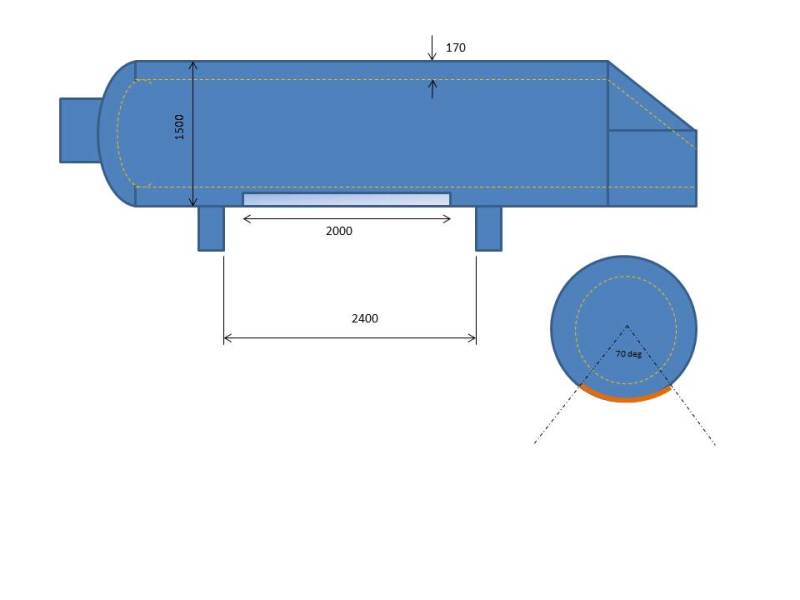wagga
Mechanical
- Jul 26, 2008
- 15
HI All
I am planning to do a shell repair on a refractory lined furnace.
Bottom section of the furnace will have the refractory removed and shell cut out.
My concern is that do I need some kind of temporary structural support when the shell is cut out.
Mind you
- Refractory on the other part of the furnace will not be removed.
- The job should take about 3 days from cut out to replacement (excluding refractory work).
Shell thickness is 12mm, Plate is AS1548-7-430.
I have attached a sketch of equipment.
The furnace sits on a concrete support.
Any feedback or assistance is appreciated, especially from those who have done such job.

I am planning to do a shell repair on a refractory lined furnace.
Bottom section of the furnace will have the refractory removed and shell cut out.
My concern is that do I need some kind of temporary structural support when the shell is cut out.
Mind you
- Refractory on the other part of the furnace will not be removed.
- The job should take about 3 days from cut out to replacement (excluding refractory work).
Shell thickness is 12mm, Plate is AS1548-7-430.
I have attached a sketch of equipment.
The furnace sits on a concrete support.
Any feedback or assistance is appreciated, especially from those who have done such job.



![[idea] [idea] [idea]](/data/assets/smilies/idea.gif)
![[r2d2] [r2d2] [r2d2]](/data/assets/smilies/r2d2.gif)